Port Klang, also known as Port Kelang, will be better known to most readers as Port Swettenham. It is now the thirteenth busiest port in the world with cargo throughput of 175 million tonnes per year and a container throughput of 10.9 million TEU per year. It lies around forty kilometres west of Kuala Lumpur, the capital of Malaysia, and was known before 12th January 1972 as Port Swettenham. Ben Line had begun calling at Malayan ports from Leith and East coast U.K. ports from 1859, and Blue Funnel Line from West coast U.K. ports from 1865. Their ships and crews called regularly at the three big ports of Penang, and Ocean Wharf at Port Swettenham from 1914, and Singapore on the Malayan peninsula. However, Port Swettenham was the favourite of these three ports for a run ashore to the local hostelries from the two berths of Ocean Wharf at Port Swettenham, as there was little difficulty in finding the ship again, unlike Penang and Singapore. The port lies just three degrees above the equator, with monsoon conditions at times and an average of 33 degrees Centigrade in the shade for most of the year.
In 1867, the Straits Settlements were formed, but civil war broke out in Selangor State at Klang seven years later between Rajah Abdullah and Rajah Mahadi, and was only ended when a British Resident was appointed for Selangor at the end of that year. Treaties were also signed in the same year by the British with the Malay rulers of Perak, and the success of the Resident system adopted in Selangor and Perak and the wisdom of the Malay rulers in following the advice of a world empire, encouraged the Malay rulers in Pahang to follow suit in 1888. In 1895, the States with Residents were combined into the Federated Malay States (FMS), under which the British Residents were to give advice to the Malay rulers and also to royalty, the Sultan of Selangor. The British involvement in the Straits Settlements was intense, and was traditionally cited as a very good example of colonial development. Gedung Raja Abdullah, the residence of Rajah Abdullah, has recently been restored and is open to the public.
In the 1870s and 1880s, coastal steamers trading between the Straits Settlements called regularly at Klang, a natural river harbour up the muddy Klang river for the Selangor tin trade, and lying a few miles inland from the coast. The jetties at Klang could only be accessed by native craft and coastal steamers drawing less than thirteen feet of water, and their crews could only land at stone steps leading to a palm frond covered jetty dwelling. The vessels loaded tin from the mines in the interior for transport to Penang. Three temporary wooden jetties were in use from 1890, but increases in trade meant a plan would have to be formulated for a new, bigger port on the coast, and opened in 1901 as Port Swettenham. The initial estimate for only a rail connection to the coast from Klang was $360,000, with staged payments of $100,000, exclusive of the cost of the construction of the first passenger ship wharf, which began towards the end of 1896. The Selangor Government had engaged a Singapore contractor with wharves being built of cast iron, and by 1900 one passenger wharf was complete and three small cargo wharves were ready for use.
The final cost of the port in 1901 was $1.109 million, exclusive of the cost of the railway line, and further work was necessary in the swamps behind the wharves, resulting in the bringing in of earth from Bukit Jati, one mile north of Klang. The whole scheme was financed by Federal Straits Settlement revenue, largely generated from railway and mineral income. On 15th September 1901, the new port of Port Swettenham was named after the High Commissioner for the Malay States, Sir J. Alexander Swettenham, who had been appointed in 1898. He had also been involved in the construction of railways in Perak and other parts of Selangor, and the port of Klang was then closed. Vessels of the Straits Steamship Co. Ltd., managed by Mansfield & Co. Ltd. in association with Blue Funnel Line since 1890, and those of the British India Steam Navigation Company (B.I.S.N.) were the first vessels to call at the port.
Difficulties were encountered in providing port services, for example in tug and pilotage services in the narrow channels into the port, whose depth had not been measured very accurately by the Royal Navy survey ship Egeria in a survey of 1893, although the depth near the new wharves was accurate. There were two channels into the port, the North and South Klang channels winding through the jungle covered offshore islands of Pulau Klang, Pulau Ketam, Pulau Tengah, Pulau Indah, Pulau Selat Kering, Pulau Pintu Sedong, and Pulau Che Mat Zin to access the Straits of Malacca. Pulau Ketam (Crab Island) is famous for its fish and crab delicacies served by the ethnic Chinese population living only thirty minutes by boat from the Port Klang jetties. In 1903, Perak and Selangor State Railways amalgamated to form FMS Railways, the owner and operator of the port. The Port Swettenham Port Advisory Board was formed in April 1911.
The new port made rapid progress from 1901 to 1912, with cargo throughput having doubled from 131,500 tonnes in 1901, and direct calls having been made from Europe by the ships of the P. & O. Steam Navigation Co. Ltd. from 1907. Tin mined by tin dredges, rice from the ricefields, rubber, palm oil, copra, cocoa, timber, pineapples, fish and firewood were carried homeward in deep sea ships, with the export of rubber having commenced in 1907 from plantations in Selangor and Perak, and formed the bulk of the exports along with tin. The port had enough wharves for coastal steamers, but insufficient wharves for deep sea ships, with a plan then advocated in 1909 to build two larger wharves of a total of 1,010 feet in length at Deepwater Point with a depth alongside of 24 to thirty feet. The provision of two passenger jetty buildings (one for coastal steamers and one for deep sea steamers), transit sheds, railway sidings, turntables and other equipment for the new Ocean Wharf was estimated at £2.75 million. The Ocean Wharf was built on steel piles sunk to a depth of forty feet below mud level, and the passenger terminals were fifty feet wide and made of steel with a timber roof, and with the provision of electric cranes working on rails to load and unload cargoes. Construction began early in 1912 with completion after three years of work towards the end of 1914 to make Port Swettenham into a truly deep sea ocean port.
Port Swettenham in 1919 consisted of the two big wharves on Ocean Wharf at the southern end of the harbour, which was connected by railway lines and bridge heads to the shore and all built on reclaimed land. There were also three coastal jetties dating from 1901 to the north of Ocean Wharf, with transit sheds and railway lines behind them. However, the port area was limited to the north and south by the rivers Klang and Aur, to the west by the harbour, and to the east by the railway tracks. The big British and European shipping lines imposed a surcharge on cargoes shipped from the port, as they argued that there already two big ports on the Straits of Malacca in Penang and Singapore. However, there was a steady increase in tonnage handled at the port in the inter-war years, from a total of exports and imports in 1920 of 252,500 tonnes to 611,800 tonnes in 1940. This was despite the surcharge imposed by the shipping companies, and despite the deep Depression from 1930 to 1935.
In 1926, some 634 deep sea vessels called at the port with imports or to load exports, and this total had more than doubled to 1,447 deep sea steamers using the port in 1930. The amount of goods handled during the trade Depression from 1930 to 1935 averaged only around 380,000 tonnes per year. The trade of the port rose rapidly again in 1936 to resume the yearly totals of the 1926 to 1930 period, due to the lifting of the shipping company surcharges and the increase in coastal traffic.
Refined oil imports began in 1930 when the Shell Petroleum Company, half British and half Dutch owned, built a small wharf at the entrance to the Klang river for the use of their associated Asiatic Petroleum Company, based in the Far East, and also used by Esso tankers of the Standard Oil Company. Imports grew rapidly after 1936 to include fuel oil, food especially rice and tapioca, machinery, timber and construction bricks, coal, and machinery and machine tools. Norwegian ships were frequent visitors in the export rice and tapioca trade. Coal was imported in large quantities for the national railways, coal burning power stations and coal burning steamers. Exports were smaller than imports, consisting of tin, rubber, latex, copra and other peninsula crops from the states of Selangor, Perak and Pahang. Seaplane facilities were made available in 1937 in Port Swettenham harbour, and an onshore airfield was completed.
POST-WAR DEVELOPMENTS
The Japanese heavily bombed and damaged the port during their occupation from 1941 to 1945. Sunken vessels lay at Ocean Wharf, which was also damaged at its southern end. The Royal Navy salvage personnel worked tirelessly, with all craft raised from the coastal wharves by the end of October 1947, and their separate ‘T’ heads were then joined together to form one wharf of six hundred feet in length. The Ocean Wharf was out of action for an even longer period, with repairs to 150 feet of damaged quay at the southern end taking until completion in 1950. The Port Swettenham Marine Department was formed on 1st April 1946 and worked vigorously with the Royal Navy to reopen the port to shipping.
By 1952, the port had once again resumed a busy normality in all of their pre-war cargoes, but had also begun a big expansion in the bulk palm oil and latex trade for two major international latex companies with in excess of one thousand tonnes of latex per month arriving from plantations in Kedah. The trade of the port had returned to normal, with construction material pouring into the port for the development of inland industrial schemes as far south as Malacca and as far north as Ipoh. Total port throughput for 1955 exceeded one million tonnes for the first time.
Ben Line were sending twenty cargo-liners and Blue Funnel Line over fifty cargo-liners to the Far East in the 1950s and 1960s, loading and unloading cargoes into the large fleet of one hundred lighters in use in Port Swettenham. The coastal steamer Benveg of 1,545 dwt, the former Empire Park, was purchased in 1951 and carried rice down to Singapore until 1962, as well as from Bangkok. Rivalries amongst the crews often arose at local hostelries, football matches and shore parties, most organised by the padres of the Missions to Seamen, resulting in pranks and good natured banter. One Ben Line ship on her maiden voyage called at Singapore homeward, and was due to load latex in number one deep tank at Port Swettenham. Cleaning had not been completed by the time the ship tied up at the latex berth, and several shore cleaners entered the tank under the supervision of officers but without adequate ventilation. Several workers became ill with severe breathing difficulties from inhaling fumes, and two workers died during the night in hospital.
In 1949, Ben Line began a twenty five day direct service to Singapore from London, thus avoiding the usual rotation of Penang, Port Swettenham and Singapore. If the ship was not on the direct service, the Chief Officer stood the watch between the three ports on this coast to give the other officers some rest, and in pre-war days a permanent deck officer was stationed in Malaya for this purpose. In 1954/55, Ben Line opened permanent branch offices in both Port Swettenham and Kuala Lumpur, staffed by both European and native personnel. Homeward cargo consisted of prodigious amounts of red and white meranti and other hardwoods from the nearby forests, all sawn into bundles, as well as ilmenite ore, a grey sand used in the manufacture of paint. Copra, baled hemp, palm oil, latex, and chrome ore were some of the many other homeward cargoes
Ben Line ships sailing outwards for Penang, Port Swettenham, Singapore in 1958/59 from the Tees, Hull and London included Benarty, Benattow, Bencruachan, Benvannock, Benmacdhui, Benledi and Benvenue. Homeward sailings were taken by Bencleuch, Bendoran, Benlawers, Benlomond, Benreoch, Benvrackie, and Benwyvis after calling at Port Swettenham from Hong Kong and Singapore. All Ben Line and Blue Funnel Line ships were forced to sail around South Africa after 1967 due to the closure of the Suez Canal. Benhope, the former Egidia built for Anchor Line in 1945 and purchased in 1962, arrived at Port Swettenham shortly after the closure and after this long outward voyage and began unloading heavy deck cargo. A new, red fire engine was being lifted over the side of the ship to the quay with her heavy lift derrick when one of the stays broke, with the mast, derrick and fire engine nearly dumped into the water between the ship and the quay. A seaman was badly cut on the head by the flailing stay, but fortunately the gear held together for just enough time to land the fire engine. Subsequent inspection showed that one of the bottle screws used for tensioning the stays was corroded, and had parted clean down the middle.
There were 33 conventional Ben Line ships sailing to the Far East in 1973, including Benarkle, Benarty, Benattow, Bencairn, Bencruachan, Bendearg, Bendoran, Bengloe, Benhiant, Benlawers, Benledi, Benlomond, Benloyal, Benreoch, Benstac, Benvannoch, Benvorlich and Benvrackie. Five had been purchased from Ellerman Line in February 1968 to trade on the much longer route around Cape Town after the closure of the Suez Canal. Containerisation on the Trio service with Far East partners, calling at Port Klang from August 1973, had cut the number of conventional cargo-liners to only seven ships five years later, with only Benarty, Bendearg and Benstac still sailing to the Far East in 1981, and Benstac sailed on for one more year until sold on expiry of charter as the last conventional cargo-liner in the fleet. She had often been out on charter to Barber Blue Sea for their Round the World service. The feeder container ship Benvalla of 426 TEU capacity was completed in 1979 by the Mitsubishi yard in Kobe with three cellular holds and ten hatches to move containers into the big container terminals in Singapore, Port Klang, Bangkok, Taiwanese and Japanese ports for Ben Asia Container Service (BACS) in a consortium of British and Japanese owners. This feeder service had used small chartered feeder vessels from the middle of 1974 when BACS had started.
THE MODERN PORT
The Klang Town Authority was formed in 1945, and the Malayan Railway Authority administered the port until the creation of the Port Klang Authority (PKA) in 1963. The Ocean Wharf had by this time been renamed as Southport and was publicly administered by the PKA, which also had awarded a contract in January 1960 for the North Klang Straits (NKS) wharves, which were opened in May 1963 and renamed Northport in 1967. Large scale development plans for rubber, palm oil, cocoa and other plantation crops were made under the Five Year plans of Malaysia in 1966, and agricultural production grew exponentially. However, within two decades, industrialisation in Selangor State had overtaken traditional agriculture, and the main export trades through Port Klang became modern light industrial products.
The PKA Port Headquarters Building was opened in May 1964. The Northport extension wharves were opened in July 1973, and unlike Southport, the developments of Northport, and the Westport of the future, with their huge blue container gantry cranes for the new container trades were privately administered. The first container terminal had been opened by the PKA in August 1973, with the OCL container ship Tokyo Bay as the first container ship to berth. The terminal was taken over by Klang Container Terminal Berhad in 1986, but with the PKA retaining a 20% interest.
Port Swettenham was officially renamed Port Kelang on 12th January 1972. A liquid bulk terminal at Northport opened ten years later, and the Port of Malacca was taken over by the PKA in 1983, with the one millionth container handled in July of that year. The Cement Terminal was opened in 1985, but imports of rice from Thailand fell from 400,000 tonnes per year in 1985 to only 120,000 tonnes per year in 1986, a saving of $14 million in foreign exchange.
The important Westport project was launched in August 1992, located on Pulau Indah and accessible by road via an expressway to this island to south west of Port Klang. The Malaysian Prime Minister, Dr. Mahathir Mohamad, who was appointed in July 1981, officially opened Westport in September 1996, and toured a large container ship at the port after the opening ceremony. The port became the first port in Malaysia to offer bunkering services in May 1997. Northport Container Terminal had opened on 26th August 1993, with container throughput at 1.5 MTEU annually.
On 24th August 1998, the Maersk Line container ship Regina Maersk of 7,100 TEU capacity docked at Westport as the largest container ship to enter a Malaysian port. Chinese container ships of CSCL and COSCO, and those of P. & O. Nedlloyd, later berthed at Westport, including the largest container ships in the world. The ro-ro Setubal on its maiden voyage docked as the first ro-ro handled at Southport in March 2004. The Malaysian registered container ship Bunga Seroja Satu owned by Malaysia International Shipping Corporation (MISC) docked on its maiden voyage at Northport in May 2006 as the largest ever Malaysian ship to call. This large MISC fleet of 22 deep sea and feeder container ships were very regular callers at Port Klang until the company exited the container trades on 24th November 2011. The third largest container line in the world, CMA CGM of France, opened its first dedicated facility at Westport in July 2009.
PORT KLANG TERMINALS
Port Klang was the thirteenth biggest port in the world in 2014, with 10.9 MTEU of container throughput (up 5.8% over the previous year), the majority handled by Westport (8.5 MTEU) operated by Westport Malaysia Sendirian Berhad (formerly Klang Multi Terminal) with Hutchison Port Holdings as the largest shareholder, and 2.6 MTEU by Northport, whose parent company is NCB Holdings. The port was awarded the title of ‘Best Asian Container Port’ by the Asian Freight and Supply Chain Awards (AFSCA). There are 56 berths in the port, comprising two dozen container ship berths, eleven break-bulk cargo berths, nine liquid bulk berths, seven dry bulk berths, one bunker berth, and two passenger and cruise berths. The current terminals in the port are:-
CONTAINER TERMINALS
Northport Container Terminal 1 has four berths of total length of 3,540 feet, alongside depth up to 13.2 metres
Northport Container Terminal 2 has five berths of total length of 3,500 feet, alongside depth of 13.0 metres
Northport Container Terminal 3 has three berths of total length of 1,752 feet, alongside depth of 15.0 metres
Westport Container Terminal has six berths of total length 5,910 feet, alongside depth of 15.0 metres
BULK and BREAKBULK TERMINALS

Northport Dry Bulk terminal handles grain, sugar, maize and feed meal at two berths for bulkers up to 45,000 dwt, alongside depth of 11.0 metres.
Westport Dry Bulk terminal 1 handles grain and sugar at two berths each of length 656 feet, alongside depth of 15.0 metres, equipped with two gantry grab unloaders.
Westport Dry Bulk terminal 2 handles fertiliser, silicon sand and slag at one berth of length 820 feet for Panamax bulkers, alongside depth of 13.5 metres
Westport Cement terminal with one berth of 935 feet in length, alongside depth of 11.0 metres for bulkers up to 35,000 dwt, equipped with eight loading and discharging pipes to the consignee plants.
Southport Dry Bulk terminal has eight berths for bulkers up to 40,000 dwt, four for deep sea vessels while the other four serve as a niche port to handle transhipment cargo for the Sumatran barge traffic to Dumai, Tanjong Balai, Pekan Baru, Buatan and Perawan.
Six break-bulk berths for steel, iron, and general cargo including boxed and ‘knocked down’ cargo, two in Northport for ships up to 60,000 dwt, and four in Westport for ships up to 80,000 dwt.
LIQUID BULK TERMINALS
Northport Liquid Bulk Terminal has two berths and several clients including Petronas and BP, handling fuel oil, diesel oil, vegetable oils and chemicals.
Southport Liquid Bulk Terminal has two berths for the export of palm oil, latex, coconut oil and vegetable oils.
Westport Liquid Bulk Terminal has five berths with a total length of 4,465 feet with alongside depths up to 16 metres.
PRO-RO TERMINAL
The ro-ro terminal is located at Westport and is an import car and vehicle terminal for Japanese car imports, and is a joint venture of Mitsui and Mitsubishi, the terminal, and Konsortium Perkapalan Berhad. Storage is provided for 40,000 cars, with facilities including pre-shipment and post-shipment inspections, body repair shop, body wrapping cover bay, and an accessory fitting bay.
PORT KLANG CRUISE TERMINAL
This is the Star Cruises terminal for the frequent cruises they operate from Singapore to West coast Malaysia and Thailand. If a Star Cruises ship is in port, visiting international cruise vessels use a nearby cargo berth, all located on the island of Pulau Indah. The ‘T’ cruise jetty is linked by a bridge to the white Boustead cruise centre with a pagoda shaped roof with red tiles. Star Cruises, Cunard Line, Royal Caribbean International, Regent Seven Seas, Princess Cruises, Aida Cruises, Silversea Cruises, Tui, Seabourn Cruises, Hapag Lloyd, Holland America Line, Crystal Cruises, MSC Cruises, Costa Cruises, Azamara Cruises, NCL and many more lines visit each year. The Queen Mary 2 of Cunard Line called here on 8th April 2016. The ferry terminal is at Southport and serves local passengers travelling on high speed ferries to Dumai and Tanjung Balai on Sumatra, and to other ports in Malaysia, Singapore and Indonesia.
RAIL INTERMODAL LINK
The railway company Keretapi Tanah Melayu Berhad (KTMB) runs a daily service from Port Klang to Penang and Bangkok for freight, and Ipoh Cargo Terminal to the north is connected six times per week to Port Klang.
SERVICES
A bunker facility is available from Westport, as well as fresh water at Westport and Northport, and water boats serve Southport and ships in the anchorage.
FREE ZONE
A Free Zone has existed since the mid 1990s in Westport, Northport and Southport for commercial businesses but not for manufacturing e.g. transhipment, cargo consolidation, storage, regional distribution, sampling, packing, repacking, stuffing, sorting, grading, labelling and repair of cargo in transit.
DISTRIBUTION CENTRES
Two distribution centres exist in Northport and Westport for the regional distribution of cargo, cargo consolidation, re-export, and cargo in transit. Warehouses and covered general cargo storage areas are extensive in these centres as well as in the port area, with a total of 15 acres of warehouses, 12.2 acres of covered storage, and 26.2 acres of open storage. The new 35 acre Westport Distribution Park (WPDP) offers temperature controlled rooms for reefer cargo, high ceiling storage, container freight storage, automated storage and retrieval systems, transtainers and computerised gate control. The long stay container storage yards are 207 hectares in area, and container open storage, clearing and forwarding areas cover 465,000 square feet.
PORT KLANG HARBOUR ACTIVITY
Port Klang is a very large port consisting of three areas of container and general cargo terminals that handle ships of Maersk Line, MSC, CMA CGM, Hapag Lloyd, APL, CSAV, ‘K’ Line, MOL, NYK, OOCL, PIL, United Arab Shipping Company (UASC), Yang Ming, Hanjin, Hyundai, Zim Line and also ships of Malaysian regional shipping companies operating between Penang and Singapore. Bulk carriers such as the eponymous German owned Port Kelang of 53,500 dwt and built in Japan in 2008 with five holds and five hatches can be seen at the bulk wharves.
The Port Klang Authority has their own fleet of thirteen harbour tugs of bollard pull between forty and sixty tonnes, with six operating from Northport, and seven from Westport e.g. the sisters Teguh and Tegap 319/95. Chartered tugs include six from the fleet of a port services division of a coastal product tanker company based in Kuala Lumpur, with names such as Nautica Puteri Tg I up to Nautica Puteri Tg XXVI of 360 grt and built between 2004 and 2013. There are also ten pilot boats, with five serving Northport and five serving Westport, all painted in international orange. Ships are met in the approaches to the port, either in the Northern Pulau Angsa Approach with a depth of 11.3 metres and a width of 365 metres, or in the Southern Pintu Gedung Approach with a depth of 16.5 metres and a width of 500 metres. The port also has many mobile cranes of 50 tonne capacity, as well as a large number of container straddle carriers, trailers, high stackers, and 60cranes of various types including blue and white painted gantry cranes at the areas of Northport and Westport. This has all been achieved in just 115 years from a small port at the entrance to the shallow, muddy Klang river.
The 16.5 metre deep southern entrance channel ensures deep draft container ships are able to enter the port with sufficient under keel clearance, bringing in cargoes that are 60% transhipment, 20% imports and 20% exports. A fleet of five dredgers is maintained by the Government of Malaysia (West Coast), as well as three buoy tenders of 1,000 grt in Pemancar, Pendamar and Pedoman, built in Malaysian yards just after the Millennium. The Royal Malaysian Navy has four tugs stationed at Port Klang, including Penyu 400/76 purchased in 1980 as Salvigilant from Selco Tugs and built by the Selco Shipyard (Pte) Ltd. with twin German diesel engines of 1,800 bhp. Private companies operate on coastal towage work e.g. sand reclamation, oil and gas projects, salvage jobs, and special project cargo towage by tugs and barges owned by Malaysia Towage and Transport Sendirian Berhad and Lunar Shipping.
Collisions can still occur however, and two container ships collided near Wharf 20 at 2130 hours on 29th October 2014, with one ship at her berth (Al Riffa) and another (San Felipe) moving up the South Channel. Containers on the bow section of San Felipe erupted in flames and the South Channel was closed until the following morning. The ships were mega container ships, Al Riffa being of 13,300 TEU of United Arab Shipp-ing Company, and San Felipe of 8,700 TEU of Bernhard Schulte Ship Manage-ment. Fortunately, no injuries were sustained by the crews or the fire fighters, with the flames raging for many hours on San Felipe.
SHIPYARD AND REPAIR FACILITIES
Muhibba Engineering Sendirian Berhad (MEB) was incorporated as a civil engineering company in 1995, and shortly afterwards established a shipyard with a waterfront of 850 metres and an alongside depth of 18.0 metres on the east side of the entrance to Port Klang harbour. The yard encompasses shipbuilding, shiprepair, ship conversion for vessels up to 80 metres (262 feet) in length, as well as ship supplies, marine engineering, and offshore oilfield structures construction. Some fifty tugs, barges and offshore support vessels have been built in the last twenty years, including the tug Syukur 169/98 for Singaporean owners, and eight tugs for the Muhibba Engineering Berhad (MEB) parent company as MEB Tug 1 to MEB Tug 8 of 195 grt. The biggest vessel constructed by the yard was completed in 2009 as the offshore support vessel IMS Aman of length 76 metres, beam of twenty metres and of 3,349 grt and equipped with a long jib crane. She is owned by IMS Offshore, and is based at Port Klang and works at Labuan in the Malaysian oilfields.
POSTSCRIPT
Passengers disembarking at the Westport cruise terminal on the island of Pulau Indah are usually taken on a day excursion to Kuala Lumpur, with the 88 floors of the tall twin towers of the Petronas Building to visit, as well as a good collection of Victorian architecture that has been preserved in this modern city. Batik weaving, pewter and ceramics, arts and crafts, colourful kites, shopping, Malaysian dining, outdoor adventures, and a host of tourist activities are all available to the visitor.
However, there is a much closer and interesting historical attraction to the port five miles away in the southern area of the town of Old Klang. This is the Palace of the Sultan (Istana Alam Shah) of Selangor, built in 1905 of white marble, grey roof tiles, with a golden dome on the top of the main white tower. The Sultans of Selangor claim descent from the rulers of the southern part of Celebes, today known as Sulawesi. The first Sultan arrived at Klang in 1766 and there have been nine Sultans to the present date. The palace has fifteen rooms, including those for ceremonies, particularly the most important ceremony of all for the coronation of a new Sultan. The current resident Sultan is His Royal Highness Tuanku Idris Sharafuddin Alhaj Shah, whose coronation was in March 2003. The Palace was built during the reign of the fifth Sultan, and is closed to the public, but there are hopes that parts of it may be refurbished and opened as a small museum.
Port Klang Authority is located at Jalan Pelabuhan on the east side of the entrance to the Klang river in Port Klang.

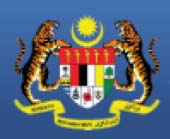
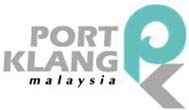

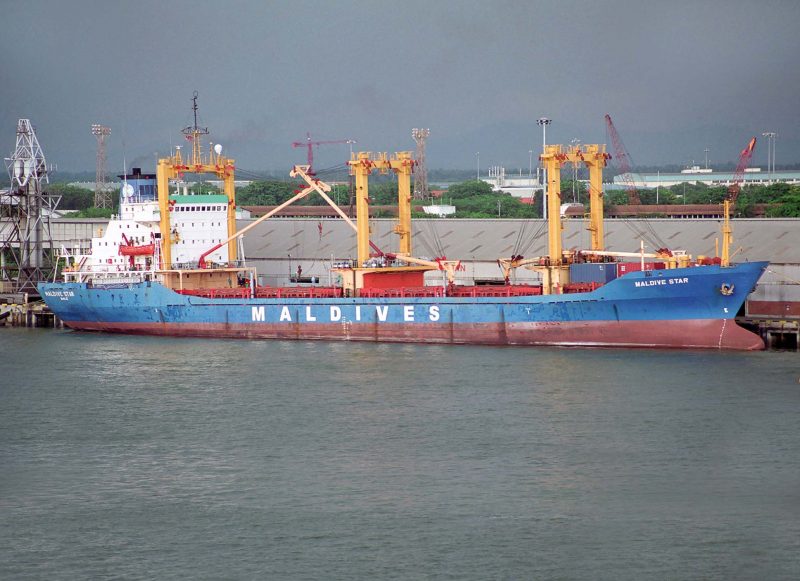
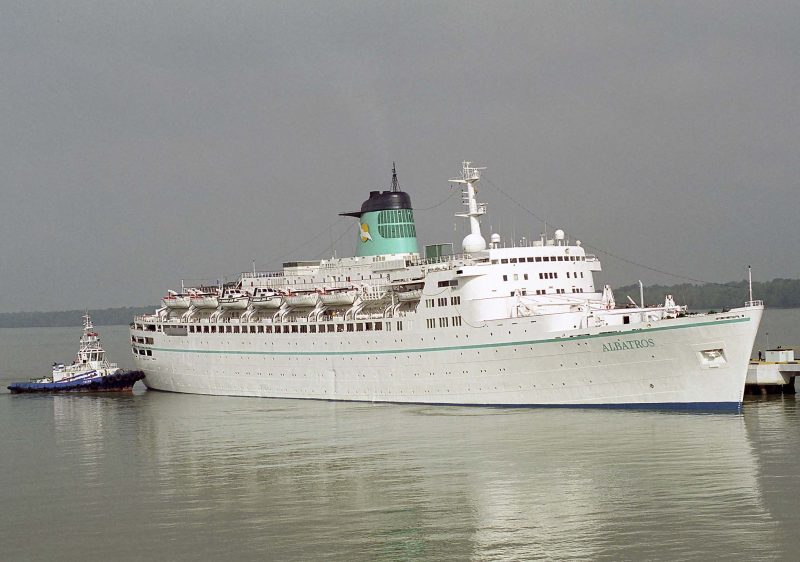

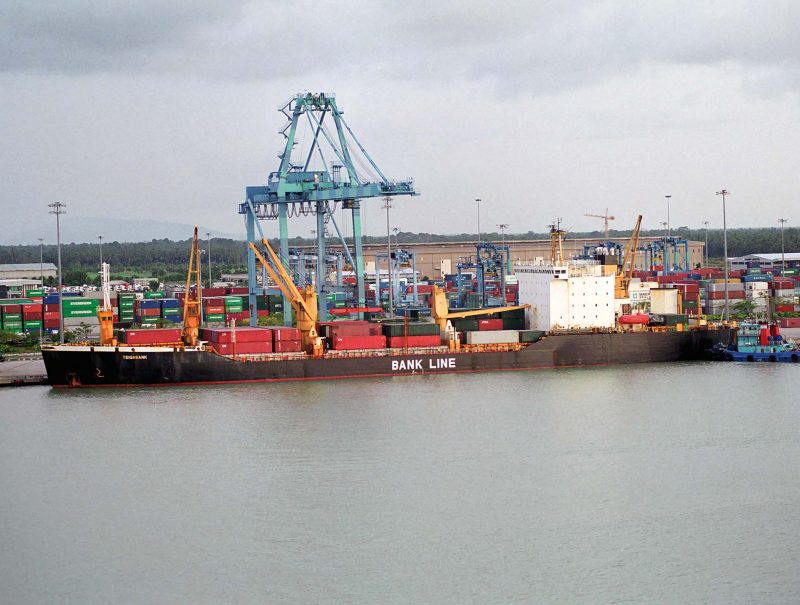
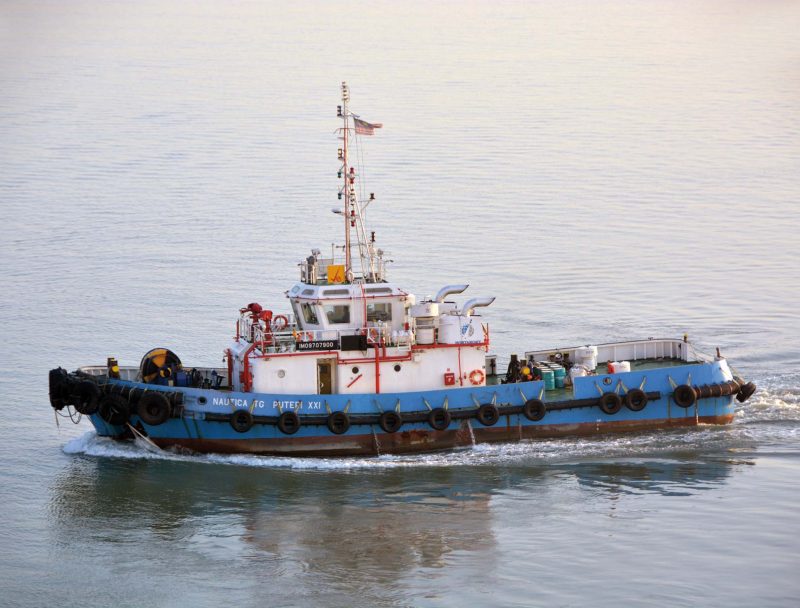
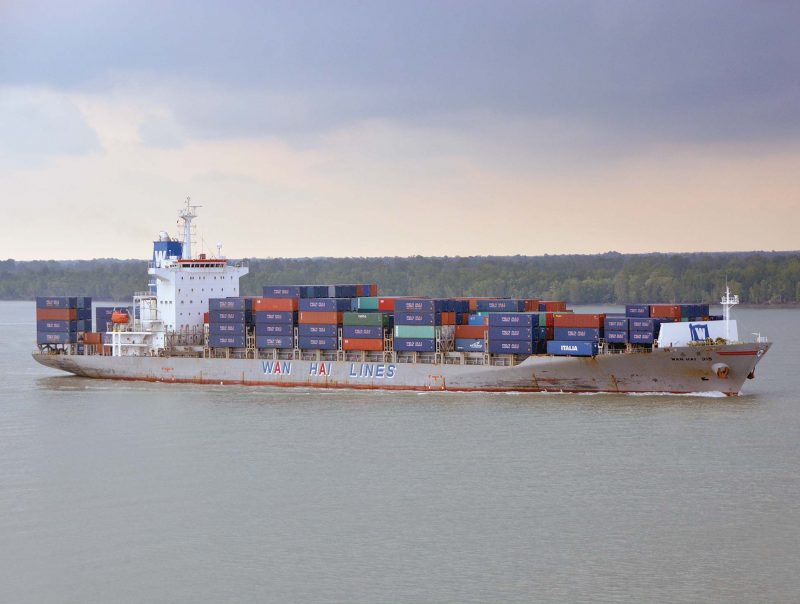
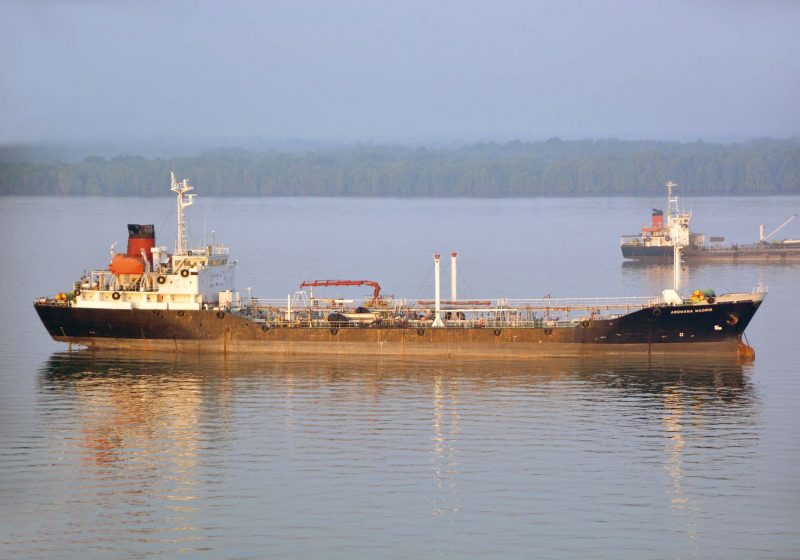
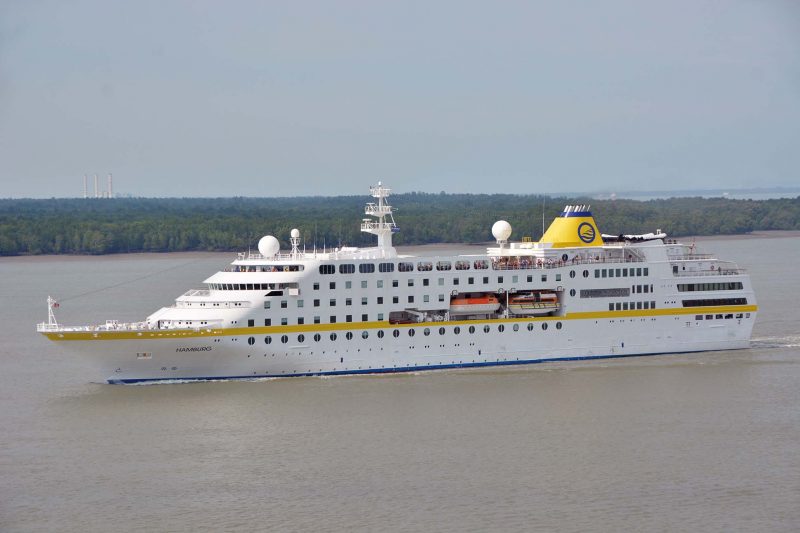

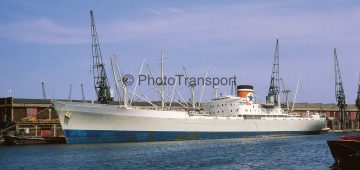



Comments
Sorry, comments are closed for this item